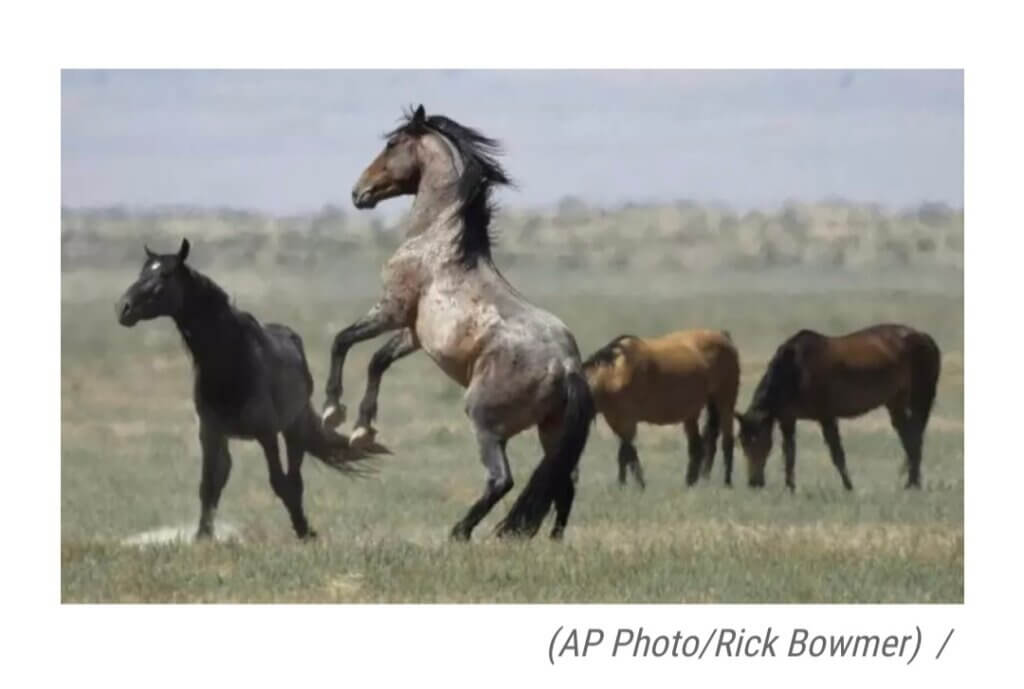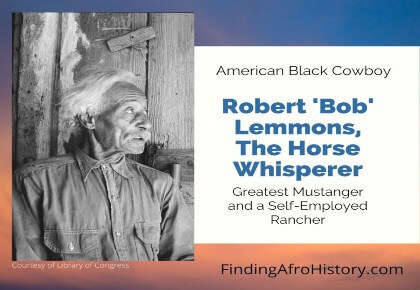Bob Lemmons – African American Cowboy, From Chattel Slavery to Horse Whisperer
Robert (Bob) Lemmons was an African American cowboy whose rise from chattel slavery is quite impressive. He was born in 1848 as a slave in Lockport Caldwell County, Texas.
At age 17, Mr. Lemmons was working alongside his white slave owner, the owner’s son, and other cowboys. They were tending cattle in the Carrizo Creek area of Texas. It was at Carrizo Creek that an altercation between Bob’s group and a group of Native Americans took place.
The Native Americans stood their ground. When the conflict ended, the slave owner’s son was dead. Devastated by the loss of his son, oddly enough, the slave owner gave Bob Lemmons his freedom.
History of Wild Mustangs
Nineteenth-century North America was home to millions of wild mustangs or Feral Horses the mustangs occupied the north and northwest parts of North America.
These muscular, stubborn, proud animals, once held captive by man, escaped their habitats and joined with other breeds of horses.
Bob Lemmons, aka the “Horse Whisperer,” a freedman at age seventeen, would play a major role in helping to settle and build human communities amidst these beasts of beauty. 
Horse Whisperers Man-to-Nature Instincts
Domination and defeat of Mustang herds was standard practice for other cowboys. They would hunt the mustangs down and use brutal tactics to subdue the lead stallion. Lemmons disagreed with this method.
Lemmon, the ‘Horse Whisperer,’ used a gentler approach. His ability to read a horse’s tracks was beyond comprehension. His round-up strategy involved him living and breathing alongside the herd.
He deliberately avoided bathing or washing his clothes. Letting the scent of outdoors fuse with his body was helpful in getting close to the horses. To prevent the stallion from detecting other nearby humans and moving its herd, at Lemmons’ request, anyone bringing him food had a designated drop-off spot far away from the targeted mustangs.
Using keen internal instincts and the sky for navigation, Bob, kneeling on the ground, and smelling the air could determine a Mustang’s weight, herd size, migration path, and how much time had passed between them migrating from one area to the next.
His strategies won the confidence and respect of the herd. His techniques made it possible for him to take away the lead stallion’s position. Then, riding at top speed on his horse named Warrior, without error or harm to the animals, he safely delivered the herds to the destination. It was not uncommon for Lemmons to arrive at the corrals riding the stallion💪🏾
With every wild mustang he led into the clutches of makeshift corrals, white and black cowboys marveled at his unmatched man-to-nature ingenuity💯.
HARSH WORKING CONDITIONS
It was a normal routine for Bob to live outdoors for weeks at a time. He slept under the watchful eye of the sky and opened his eyes to the brightness of sunlight.
For this African-American cowboy, his unique set of skills prepared him for the day-to-day hardships of the profession. Bugs, bad weather, and limited food sources were challenges. Yet, this was a life he embraced, and he did it well.
Lemmons’ role as a Mustanger helped clear a vast amount of land. Ranchers gained grazing space for their cattle. The Mustang’s speed and agility on rough terrain also made them ideal for herding cattle.
BOB LEMMONS’ MODEST FORTUNE 🎯
As a 19th-century Mustanger, Bob Lemmons received pay for his work.
By age 22, Mr. Robert ‘Bob’ Lemmons had saved approximately $1000 dollars gathering wild mustangs.
He put the income to perfect use. He bought a small ranch and stocked it with horses and other farm animals. By age forty, he owned nearly 1200 acres of land.
Mr. Lemmons and his wife, who were financially stable, produced 8 children and enjoyed their property and other holdings.
Mr. Robert ‘Bob’ Lemmons died on December 23, 1945. He was ninety-nine.
Image: Wild Horses (AP) RickBowmer) https://knpr.org/show/knprs-state-of-nevada/2019-11-06/as-populations-of-wild-horses-soar-so-do-tensions-over-management

